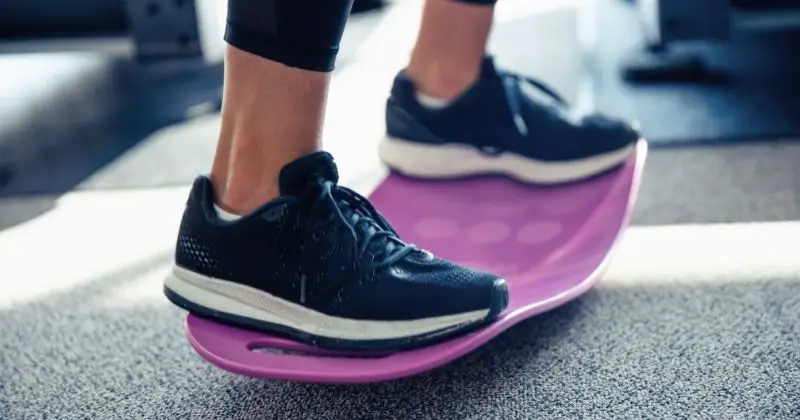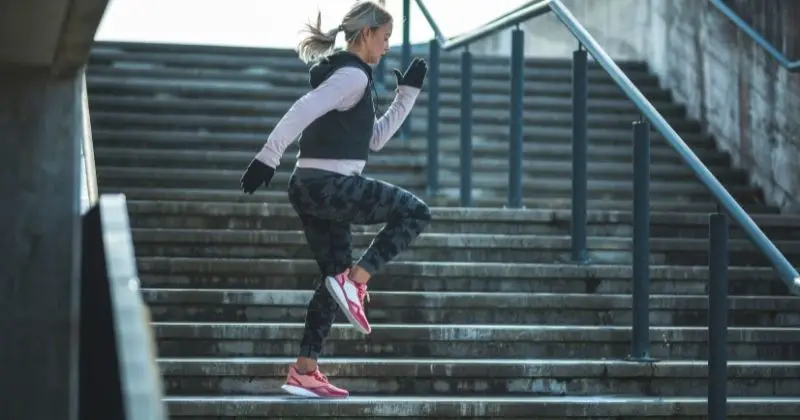We all want to achieve balance in our lives, but what about finding balance in our bodies? When you train for balance it improves your coordination and strength. It allows you to move more quickly and steadily. Moreover, balance improves your mobility and flexibility. I’ve written this article to provide you with the best exercises for balance training.

Importance of Exercises for Balance Training
Millions of people above 65 fall each year, according to the Centers for Disease Control and Prevention, and falls are the leading cause of both nonfatal and fatal injuries. With that in mind, it turns out that maintaining one’s fitness and living a happy, healthy life is all about finding balance.
Fortunately, with more excellent balance, potentially life-changing falls can be stopped. Being on your feet and moving more can help your balance improve. These balance-focused workouts will provide you with the foundation you need to step into the new year confidently and feel fantastic. Exercises also help you to prevent diabetes.
Warm-up plan
What is the ideal strategy to make balance-based moves? Get ready for warm-up. Warming up with movements is an amazing way to activate your core and psychologically prepare yourself for the workout. Balancing involves a substantial amount of mental attention.
Are you ready to begin? Here we have demonstrated “4 Main Types of Exercises for Balanced Training” to challenge and develop your balancing abilities.
- T-Stand with Hinge and Side Bend
- Start by balancing on your left leg, with your right knee bent at a 90-degree angle and your hands outstretched to the side.
- Hinge at the hips, tense your abs, and raise your right leg behind you.
- Lower your body and extend your right hand to the inside of your left ankle as you do so.
- Return to the beginning. Then, using your right hand, reach to touch the outside of your right leg.
- On one side, repeat the pattern eight times. Repeat on the other side.
Train your core muscles with this exercise. Challenge yourself by balancing on one leg while moving through multiple planes of motion. To experience it more difficult, keep your arms extended to the sides and carry a medium to heavyweight.
- Standing Crunch with Under-the-Leg Clap
- Start by balancing on one leg, with the other in front of you, knee bent at a 90-degree angle, and hands clapped overhead.
- Clap your hands beneath the elevated leg and crunch forward.
- Clap 12 times over your head and beneath your high leg. Rep with your other leg.

Balancing on one leg is challenging enough. With these claps, you can add movement in the middle of a static hold, and your core will be on fire. To make this more challenging, use light to medium weights. Drop your leg to the ground when clapping to make it easier.
- Plank with Flying Plane Arms
- Start in a high plank stance with your arms outstretched and your hands just beneath your shoulders.
- Keep your hips firm and your core engaged as you lift one arm straight out in front of you.
- Continue to raise your arm.
- Bring your hand back to the front and let it fall.
- Repeat the previous steps on the other side.
- Repeat this process 12 times.
“By lifting and mobilizing one of your extremities, both your core strength and stability are challenged,” Darby explains. You can bring your feet closer together to make it more difficult. Opposite, open your feet wider or do the sequence on all fours to make it easier for yourself.
- Arm Sequence with Lifted Heels
- Begin by standing with your feet together, knees pulling in toward each other and slightly bent, and a set of light to medium weights at your sides.
- Lift your heels roughly 2 inches off the floor.
- Hold this position while performing a bicep curl and a shoulder press.
- Lower the weights back to the starting position with your arms outstretched.
- To avoid arching your back, keep your core engaged throughout the movement.
- Rep the sequence eight times more.
Your center of gravity is naturally unstable when you stand in a narrow stance with your heels raised. Your core strength and balance are further tested by adding moving arms on top of it. Bend your knees further and use heavier weights to make this more difficult. You can drop your heels between arm movements and forget the weights to simplify it.
Check out this awesome video with exercises to improve your balance:
Areas It targets
- Core:
Yes! Good balance necessitates the use of solid core muscles. Several stabilization exercises will work out your abs and other core muscles.
- Arms:
No! The majority of balance exercises involve balancing on your toes. They don’t train your arms unless you’re doing movements that require your arms or holding weights.
- Legs:
Yes! Leg muscles are also worked through exercises where you balance one leg and then squat or bend forward.
- Glutes:
Yes! The exact balance activities that develop the legs also tone the glutes.
- Back:
Yes! Some of your back muscles are included in your core muscles.
Tip:
While doing these exercises, keep your core abdominal muscles engaged. It will help maintain your center of gravity, the toning of your abdominal muscles, and the improvement of your posture.
Improve your balance
You may improve your balance over time by doing the following exercises:
- Keeping the position for a more extended time.
- Including movement in a posture.
- Keep your eyes closed.
- Give up your chair or another kind of assistance.
Bonus tips:
Activities like tai chi and yoga will also help you improve your balance. These exercises are slow and soft motions. These could help you focus on core strengths while being in your space. Furthermore, they promote breathing and awareness, which may help in discovering mental, emotional, or spiritual balance.
These exercises may be done regularly, and many of them can be easily incorporated into other everyday tasks. So, balance development doesn’t have to be a burden to add to your to-do list. While waiting in line at the bank or doing the dishes, do toe-ups or balance on one foot.
When you’re going to refill a glass of water or across the room during a commercial break, walk heel-to-toe. Your physical equilibrium will improve without interfering with the balance you’ve established in your everyday routine.
Combine particular balancing exercises with lower-body strength workouts for further progress, but include rest days for the strength activities. As with other workout programs, consult your doctor, recognize your limitations, and take precautions to ensure your safety at all times.
How does it work?
Balancing exercises target your core, lower back, and legs muscles. Lower-body strength training might also help you improve your balance. Balance exercises might be strenuous but the constant effort is always fruitful. You can ask someone to help you when starting balanced training.
You can change the workouts time by time. Once you’ve mastered the exercises, do them with one or both eyes closed. It may also boost your muscular performance. Concentrating on your balance may also assist you in focusing and clearing your thoughts.
Why is balance vital?
When your body is fully balanced, it allows you to move with more coordination, ease, and fluidity. You could also gain more substantial and more enhanced movement during athletic activities. Your diet should be according to your body type to help you enhance your overall health and fitness. These improvements help prevent the risk of injury and fall, especially in older adults and people with Parkinson’s disease.
It might make you live a longer life. Throughout the day, keep an eye on your posture and stability. Notice where and how you lose your balance and make the appropriate rectifications in your body.
Benefits of Adding Exercises for Balance into your workout:
- Body Awareness
The sense of how your limbs are oriented in space is called “Body awareness.” It is also known as “proprioception”. Balance training improves your body awareness. It also decreases the likelihood of injury.
- Coordination
If your entire body doesn’t work together during balance training, you could fall or stumble. When you regularly do balance training, it might transfer into coordination in everyday life.
- Joint Stability
Balance training exercises Improve the stability of knees, ankles, hips, and shoulders. This training prevents many injuries, including sprained ankles and severe knee problems.
- Long-term health
When you master balance training exercises, they might help prevent falls and fractures. As we get older, we might stumble our balance, something we never want to happen! So do balance training regularly.
- Reaction Time
If you are habitual of balance training, you could surely balance your reaction time. For example, if you slip or stumble when performing balance exercises, your body will re-balance immediately, or you will fall. Similarly, it will help you improve your reaction time in everyday life.
Final Words
When you have a balanced body, it is easier to move and prevent injuries. You have to know about each moment you make. Balance is essential to living a healthy and functional life. So, incorporate balanced training exercises into your fitness routine. In addition, try to build muscles and lose fat as a sound body has a sound mind. Let me know in the comments what kind of exercises you do? Keep improving your balance!
